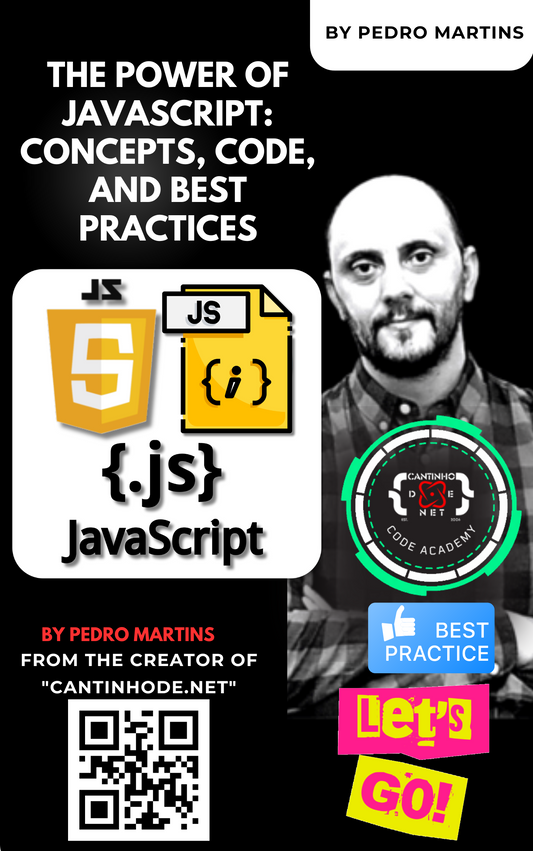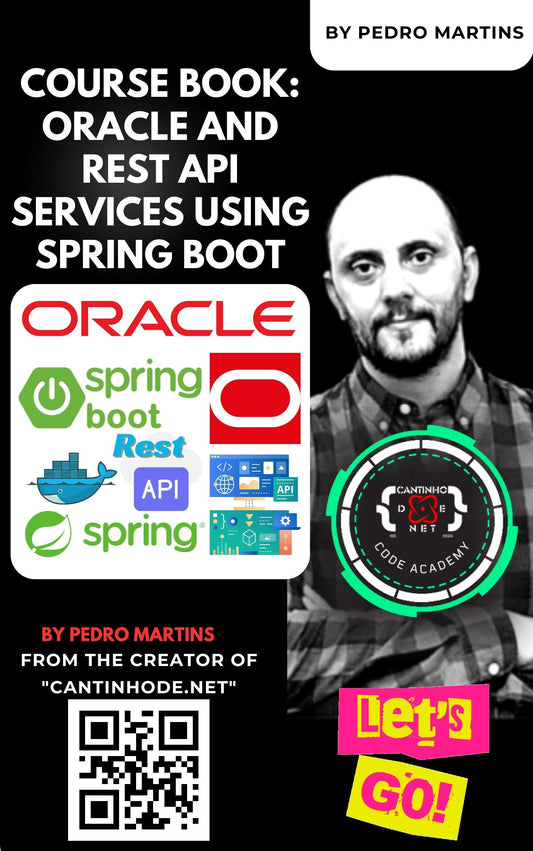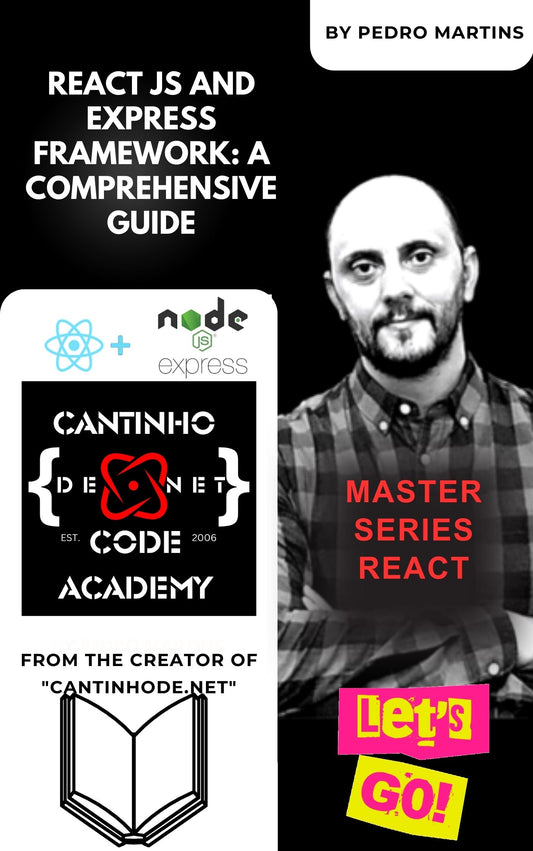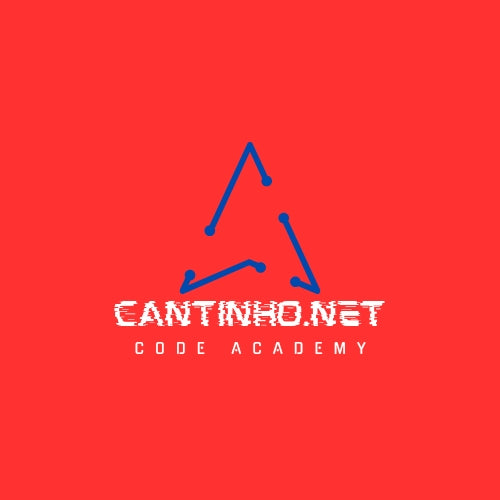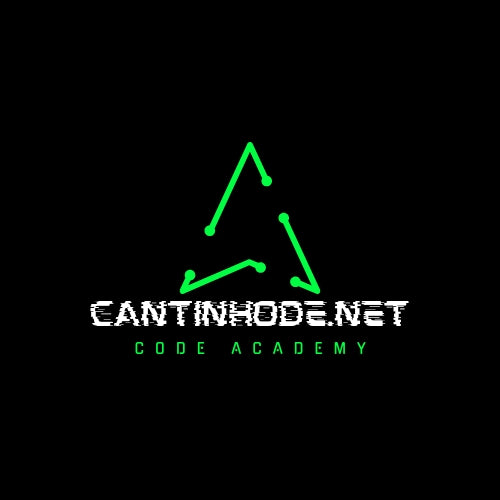Previsão com Javascript e Asp.net usando ML.net
Pedro MartinsAbaixo está um guia abrangente para ajudar você a criar uma solução de previsão de preços usando JavaScript e ASP.NET Web API.
---
Índice
1. Visão geral dos modelos de previsão de preços
2. Pilha de tecnologia
3. Implementação passo a passo
A. Configurando a API Web do ASP.NET
B. Integrando Aprendizado de Máquina com ML.NET
C. Criação de endpoints para previsão de preços
D. Desenvolvendo o Frontend com JavaScript
4. Código de exemplo
A. Estrutura do projeto da API Web ASP.NET
B. Treinando um modelo com ML.NET
C. Criando o ponto final de previsão
D. Integração de front-end JavaScript
5. Melhores Práticas
6. Recursos e leituras adicionais
---
1. Visão geral dos modelos de previsão de preços
A previsão de preços pode ser abordada por meio de diversos modelos estatísticos e de aprendizado de máquina. A escolha do modelo depende da natureza dos seus dados, da complexidade das relações e da precisão desejada.
Modelos comuns:
Modelos de séries temporais:
ARIMA (Média Móvel Integrada AutoRegressiva): Boa para previsão de séries temporais univariadas.
Suavização exponencial (ETS): útil para capturar tendências e sazonalidade.
Modelos de Aprendizado de Máquina:
Regressão linear: simples e interpretável, mas pode não capturar padrões complexos.
Árvores de decisão e florestas aleatórias: lidam bem com relacionamentos não lineares.
Máquinas de reforço de gradiente (por exemplo, XGBoost): alto desempenho para diversas tarefas.
Redes neurais (por exemplo, LSTM para séries temporais): capturam dependências temporais complexas.
Modelos híbridos:
Combinando diferentes modelos para alavancar seus pontos fortes.
Recomendação: Para uma solução robusta dentro do ecossistema .NET, o ML.NET é uma biblioteca poderosa que suporta vários modelos de regressão e previsão de séries temporais.
---
2. Pilha de tecnologia
Backend:
ASP.NET Web API: para criar endpoints RESTful para treinamento e previsão de modelos.
ML.NET: Para construir e implantar modelos de aprendizado de máquina.
Front-end:
JavaScript (com frameworks como React, Angular ou Vue.js): para criar uma interface de usuário interativa.
Banco de dados (opcional):
SQL Server, PostgreSQL, etc.: Para armazenar dados históricos, se necessário.
Ferramentas de desenvolvimento:
Visual Studio ou Visual Studio Code
SDK .NET
Node.js (se estiver usando frameworks JavaScript)
---
3. Implementação passo a passo
A. Configurando a API Web do ASP.NET
1. Crie um novo projeto de API Web ASP.NET:
Use o Visual Studio ou o .NET CLI.
dotnet new webapi -n PriceForecastingAPI
cd PriceForecastingAPI
2. Instale os pacotes ML.NET:
Adicione pacotes ML.NET ao seu projeto.
dotnet adicionar pacote Microsoft.ML
dotnet adicionar pacote Microsoft.ML.TimeSeries
3. Estrutura do Projeto:
Organize seu projeto com pastas como Modelos, Serviços e Controladores.
B. Integrando Aprendizado de Máquina com ML.NET
1. Preparação de dados:
Colete e pré-processe dados históricos de preços.
Garanta que os dados estejam limpos, normalizados e formatados adequadamente.
2. Defina modelos de dados:
// Modelos/PriceData.cs
classe pública PriceData
{
data e hora públicas Data {obter; definir;}
público float Preço { obter; definir; }
}
// Modelos/PrevisãoDePreço.cs
classe pública PricePrediction
{
público float PreçoPrevisto { obter; definir; }
}
3. Treinamento do modelo:
Use o ML.NET para criar e treinar seu modelo de previsão.
usando Microsoft.ML;
usando Microsoft.ML.TimeSeries;
classe pública PriceForecastingService
{
privado somente leitura MLContext _mlContext;
ITransformer privado _modelo;
serviço público de previsão de preços ()
{
_mlContext = novo MLContext();
TrainModel();
}
privado vazio TrainModel()
{
// Carregar dados
var data = _mlContext.Data.LoadFromTextFile<PriceData>("data/prices.csv", hasHeader: true, separatorChar: ',');
// Definir pipeline
var pipeline = _mlContext.Forecasting.ForecastBySsa(
outputColumnName: "PreçoPrevisto",
inputColumnName: "Preço",
Tamanho da janela: 12,
sérieComprimento: 36,
Tamanho do trem: 100,
horizonte: 5);
// Treine o modelo
_modelo = pipeline.Fit(dados);
}
público float[] Previsão(int passos)
{
var engine = _mlContext.Model.CreateTimeSeriesEngine<PriceData, ForecastOutput>(_model);
var previsão = engine.Predict();
retornar previsão.ForecastedPrice.Take(steps).ToArray();
}
}
classe pública ForecastOutput
{
público float[]PreçoPrevisto { obter; definir; }
}
C. Criação de endpoints para previsão de preços
1. Crie um controlador:
usando Microsoft.AspNetCore.Mvc;
[Controlador Api]
[Rota("api/[controlador]")]
classe pública ForecastController: ControllerBase
{
privado somente leitura PriceForecastingService _forecastingService;
público ForecastController(PriceForecastingService forecastingService)
{
_forecastingService = serviço de previsão;
}
[HttpGet("preço")]
público IActionResult GetPriceForecast(int passos = 5)
{
var previsão = _forecastingService.Forecast(etapas);
retornar Ok(previsão);
}
}
2. Registre serviços em Startup.cs ou Program.cs:
serviços.AddSingleton<PriceForecastingService>();
D. Desenvolvendo o Frontend com JavaScript
1. Escolha uma estrutura (opcional):
Use JavaScript simples ou estruturas como React, Angular ou Vue.js.
2. Criar chamadas de API:
Use fetch ou bibliotecas como axios para chamar os endpoints da API.
3. Exibir dados previstos:
Apresente os preços previstos usando gráficos (por exemplo, Chart.js) ou tabelas.
Exemplo usando Fetch:
// Obter preços previstos
função assíncrona getPriceForecast(etapas = 5) {
tentar {
const resposta = await fetch(`/api/forecast/price?steps=${steps}`);
se (!resposta.ok) {
lançar novo erro('A resposta da rede não foi ok');
}
const previsão = await response.json();
displayForecast(previsão);
} pegar (erro) {
console.error('Erro ao buscar previsão:', erro);
}
}
// Exibir preços previstos
função displayForecast(previsão) {
const forecastContainer = document.getElementById('previsão');
previsãoContainer.innerHTML = '';
forecast.forEach((preço, índice) => {
const p = document.createElement('p');
p.textContent = `Etapa ${index + 1}: $${price.toFixed(2)}`;
forecastContainer.appendChild(p);
});
}
// Inicializar
document.getElementById('forecastButton').addEventListener('clique', () => {
const passos = parseInt(document.getElementById('stepsInput').value) || 5;
obterPrevisãoDePreço(etapas);
});
Exemplo de HTML:
<!DOCTYPE html>
<html lang="pt">
<cabeça>
<meta charset="UTF-8">
<title>Previsão de preços</title>
</cabeçalho>
<corpo>
Previsão de preços
<input type="number" id="stepsInput" placeholder="Número de etapas" min="1" />
<button id="forecastButton">Obter previsão</button>
<div id="previsão"></div>
<script src="app.js"></script>
</corpo>
</html>
---
4. Código de exemplo
A. Estrutura do projeto da API Web ASP.NET
API de previsão de preços/
├── Controladores/
│ └── ForecastController.cs
├── Modelos/
│ ├── PriceData.cs
│ └──Previsão de Preço.cs
├── Serviços/
│ └── PriceForecastingService.cs
├── dados/
│ └── preços.csv
├── Programa.cs
├──PreçoForecastingAPI.csproj
└── ...
B. Treinando um modelo com ML.NET
PriceForecastingService.cs
usando Microsoft.ML;
usando Microsoft.ML.TimeSeries;
usando Sistema;
usando System.Linq;
namespace PriceForecastingAPI.Services
{
classe pública PriceForecastingService
{
privado somente leitura MLContext _mlContext;
ITransformer privado _modelo;
serviço público de previsão de preços ()
{
_mlContext = novo MLContext();
TrainModel();
}
privado vazio TrainModel()
{
// Carregar dados
var data = _mlContext.Data.LoadFromTextFile<PriceData>("data/prices.csv", hasHeader: true, separatorChar: ',');
// Definir pipeline de previsão
var pipeline = _mlContext.Forecasting.ForecastBySsa(
outputColumnName: "PreçoPrevisto",
inputColumnName: "Preço",
Tamanho da janela: 12,
sérieComprimento: 36,
Tamanho do trem: 100,
horizonte: 5);
// Treine o modelo
_modelo = pipeline.Fit(dados);
}
público float[] Previsão(int passos)
{
var engine = _mlContext.Model.CreateTimeSeriesEngine<PriceData, ForecastOutput>(_model);
var previsão = engine.Predict();
retornar previsão.ForecastedPrice.Take(steps).ToArray();
}
}
}
PriceData.cs
usando Sistema;
namespace PriceForecastingAPI.Models
{
classe pública PriceData
{
data e hora públicas Data {obter; definir;}
público float Preço { obter; definir; }
}
}
ForecastOutput.cs
namespace PriceForecastingAPI.Services
{
classe pública ForecastOutput
{
público float[]PreçoPrevisto { obter; definir; }
}
}
C. Criando o ponto final de previsão
ForecastController.cs
usando Microsoft.AspNetCore.Mvc;
usando PriceForecastingAPI.Services;
namespace PriceForecastingAPI.Controllers
{
[Controlador Api]
[Rota("api/[controlador]")]
classe pública ForecastController: ControllerBase
{
privado somente leitura PriceForecastingService _forecastingService;
público ForecastController(PriceForecastingService forecastingService)
{
_forecastingService = serviço de previsão;
}
[HttpGet("preço")]
público IActionResult GetPriceForecast(int passos = 5)
{
se (passos < 1 || passos > 100)
{
return BadRequest("Os passos devem estar entre 1 e 100.");
}
var previsão = _forecastingService.Forecast(etapas);
retornar Ok(previsão);
}
}
}
Program.cs (para .NET 6+)
var builder = WebApplication.CreateBuilder(args);
// Adicione serviços ao contêiner.
construtor.Serviços.AdicionarControladores();
construtor.Services.AddSingleton<PriceForecastingService>();
// Saiba mais sobre como configurar o Swagger/OpenAPI em https://aka.ms/aspnetcore/swashbuckle
construtor.Services.AddEndpointsApiExplorer();
construtor.Services.AddSwaggerGen();
var app = construtor.Build();
// Configure o pipeline de solicitação HTTP.
se (app.Environment.IsDevelopment())
{
aplicativo.UseSwagger();
aplicativo.UseSwaggerUI();
}
app.UseHttpsRedirection();
aplicativo.UseAuthorization();
aplicativo.MapControllers();
aplicativo.Executar();
D. Integração de front-end JavaScript
app.js
função assíncrona getPriceForecast(etapas = 5) {
tentar {
const resposta = await fetch(`/api/forecast/price?steps=${steps}`);
se (!resposta.ok) {
const errorText = aguardar resposta.text();
lançar novo erro(errorText || 'A resposta da rede não foi ok');
}
const previsão = await response.json();
displayForecast(previsão);
} pegar (erro) {
console.error('Erro ao buscar previsão:', erro);
alert('Falha ao buscar previsão: ' + error.message);
}
}
função displayForecast(previsão) {
const forecastContainer = document.getElementById('previsão');
previsãoContainer.innerHTML = '';
const lista = document.createElement('ul');
forecast.forEach((preço, índice) => {
const listItem = document.createElement('li');
listItem.textContent = `Etapa ${index + 1}: $${price.toFixed(2)}`;
lista.appendChild(listaItem);
});
forecastContainer.appendChild(lista);
}
document.getElementById('forecastButton').addEventListener('clique', () => {
const stepsInput = document.getElementById('stepsInput');
const passos = parseInt(stepsInput.valor, 10) || 5;
obterPrevisãoDePreço(etapas);
});
índice.html
<!DOCTYPE html>
<html lang="pt">
<cabeça>
<meta charset="UTF-8">
<title>Previsão de preços</title>
<estilo>
corpo { família de fontes: Arial, sem serifa; preenchimento: 20px; }
#previsão { margem superior: 20px; }
</estilo>
</cabeçalho>
<corpo>
Previsão de preços
<label for="stepsInput">Número de etapas:</label>
<tipo de entrada="número" id="stepsInput" min="1" máx="100" valor="5">
<button id="forecastButton">Obter previsão</button>
<div id="previsão"></div>
<script src="app.js"></script>
</corpo>
</html>
Observação: certifique-se de que seu frontend esteja sendo servido corretamente e, se estiver usando frameworks como React ou Angular, ajuste a configuração adequadamente.
---
5. Melhores Práticas
1. Qualidade dos dados: garanta que seus dados históricos sejam precisos, limpos e livres de inconsistências.
2. Engenharia de Recursos: Incorpore recursos relevantes que podem influenciar o preço, como recursos relacionados ao tempo (mês, trimestre), fatores externos (indicadores econômicos), etc.
3. Avaliação do modelo: Use métricas apropriadas (por exemplo, MAE, RMSE) para avaliar o desempenho do seu modelo. Considere técnicas de validação cruzada.
4. Escalabilidade: se estiver lidando com grandes conjuntos de dados ou altos volumes de solicitações, considere otimizar sua API e possivelmente usar mecanismos de cache.
5. Segurança:
Implemente autenticação e autorização, se necessário.
Valide e higienize todas as entradas para evitar ataques como injeção de SQL ou XSS.
6. Controle de versão: controle a versão da sua API para gerenciar atualizações e manter a compatibilidade com versões anteriores.
7. Registro e monitoramento: implemente registros para rastrear o uso e os erros da API. Use ferramentas de monitoramento para monitorar o desempenho do aplicativo.
8. Documentação: use ferramentas como o Swagger para documentar seus endpoints de API, facilitando o entendimento e o uso da API por desenvolvedores front-end e outras partes interessadas.
---
6. Recursos e leituras adicionais
Documentação do ML.NET: https://docs.microsoft.com/en-us/dotnet/machine-learning/
Documentação da API Web do ASP.NET: https://docs.microsoft.com/en-us/aspnet/core/web-api/
Previsão de séries temporais com ML.NET: https://docs.microsoft.com/en-us/dotnet/machine-learning/how-to-guides/time-series
API de busca JavaScript: https://developer.mozilla.org/en-US/docs/Web/API/Fetch_API
Chart.js para visualização de dados: https://www.chartjs.org/
Melhores práticas de segurança para ASP.NET Core: https://docs.microsoft.com/en-us/aspnet/core/security/
Swagger/OpenAPI para documentação de API: https://swagger.io/docs/
---
Seguindo os passos e as práticas recomendadas acima, você pode criar um aplicativo robusto de previsão de preços usando JavaScript para o front-end e ASP.NET Web API para o back-end. Ajuste a complexidade e os recursos de acordo com seus requisitos específicos e a natureza dos seus dados.
Se você encontrar desafios específicos ou precisar de mais assistência com aspectos específicos da implementação, fique à vontade para perguntar!
Formatar como seções de artigo HTML

